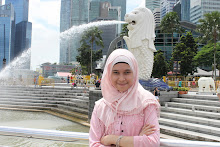The Cheap Fare
and The Cheap Security
TransJakarta
or commonly called busway is a bus rapid transport system in Jakarta,
Indonesia. The system is modeled based on the successful TransMilenio system in
Bogota, Colombia. Busway plan was started in 1997 by consultants from the
UK. At that time it was scheduled bus
runs contrary to traffic flow (contra flow) so that lines are not appropriated
another vehicle, but was canceled in consideration of traffic safety. Although
Busway in Jakarta imitate other countries (Colombia, Japan, Australia), but Jakarta
has the most and the longest lines.
TransJakarta
ticket fare is Rp. 3500 (December 2006) per trip. Passengers moving point and /
or transit across the corridor did not have to pay an additional fare provided
it does not get out of the shelter. For passengers who purchase tickets at 5-7
am in the morning, they can obtain tickets at a more economical price of Rp.
2,000.
The
Chairman of the Advocacy Indonesia (MTI), Dharmaningtyas, assess TransJakarta
bus fare should be increased. Because, he said, since it was first operated on
seven years ago, had never been on the busway fare.
"Rates
ideal TransJakarta per passenger is Rp 4,000. Amount is deemed still accessible
to the public. However also not too political, because it does not rely too
much on subsidies from the city administration," said Darmaningtyas in
Jakarta, Wednesday, January 4, 2012
But
if the rate of transjakarta increased to Rp 4,000. It is still very cheap for
the people in Jakarta. But you know, behind the cheapness of Transjakarta
rates, security in the busway even this is relatively 'cheap'. Such as many sexual
harassment occur on the bus. Sexual harassment occurring within
Transjakarta increased 100 percent compared to 2010. In 2011 were recorded 8
cases of sexual harassment, an increase from last year's total of 4 cases. Although
I am not a transjakarta’s user, but I am quite concerned with the accident like
this.
TransJakarta
Public Service Agency said the increase in sexual harassment caused by the
addition of the corridor into 10 corridors as well as an increase in the number
of passengers. Various forms of sexual harassment are often accepted by women
on the bus transJakarta. High of immoral acts of sexual harassment on the
bus transJakarta , making PT Public
Service Agency (BLU) Transjakarta plans to separate men and women passengers. He
will listen to the separation of passengers in the bus. If the passengers get a
good response then BLU TransJakarta will impose this on all the corridors in
the hope of pressing the wanton acts on the bus. Currently the separation of
passengers carried in PT BLU TransJakarta still manually. For male
passenger was placed in the back of the bus, while the female passenger was in
the front.
I
hope this rule must continue. So, all the passengers can feel the comfortable,
especially for women passengers.
